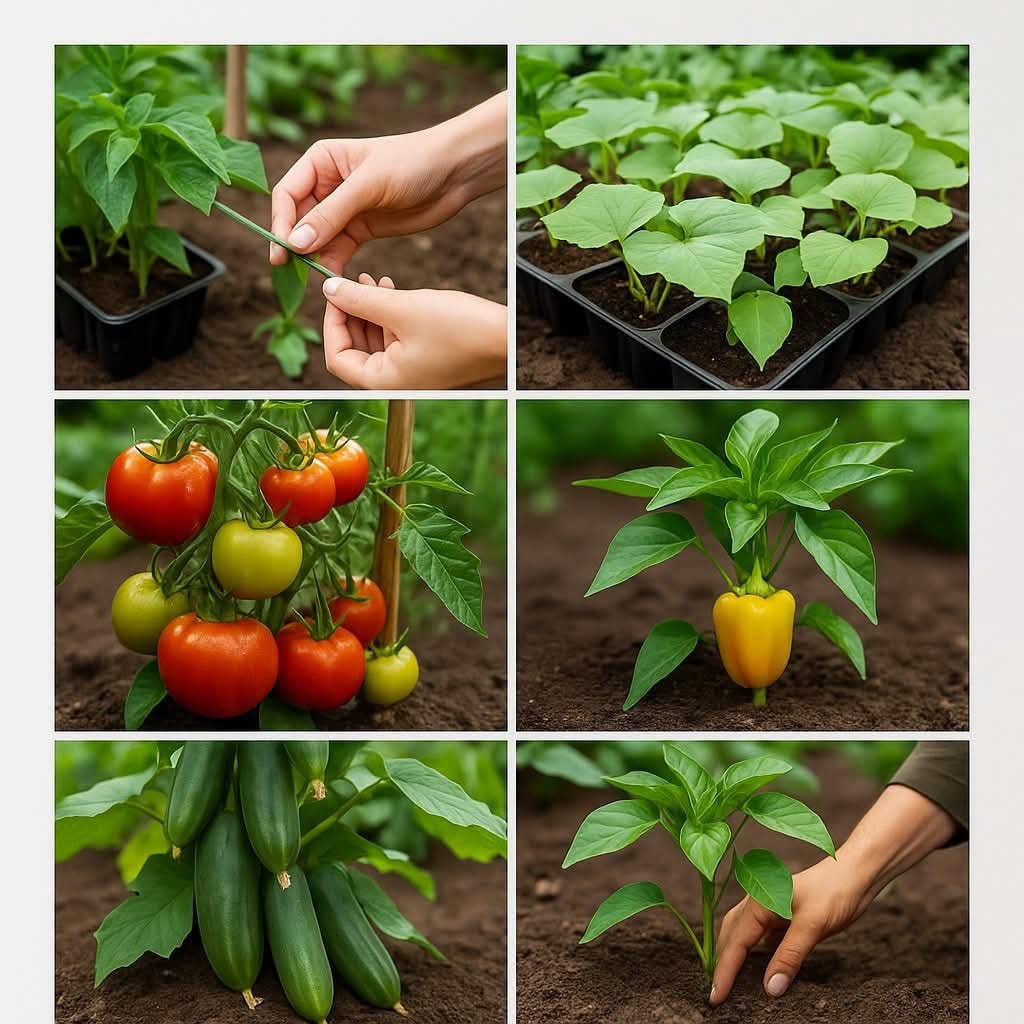Simple Tips for Stronger, Healthier Garden Plants 🌿🍅
Growing vegetables like tomatoes, cucumbers, and peppers can be easy and rewarding when you follow a few smart gardening techniques. These simple tips will help your plants grow stronger, resist disease, and produce bigger, tastier harvests all season long!
1. Start with Healthy Seedlings
Choose strong, vibrant seedlings with deep green leaves and sturdy stems. Avoid leggy or yellowing plants — they often struggle to adapt after transplanting. For best results, start seeds indoors and transplant them once they have 4–6 true leaves.
2. Prepare Rich, Well-Draining Soil
Vegetables love fertile, loose soil filled with organic matter. Mix compost, aged manure, or worm castings into your garden bed before planting. This improves drainage, feeds beneficial microbes, and gives your plants the nutrients they need to thrive.
3. Give Each Plant Enough Space
Crowding plants can lead to poor airflow and disease. Space your tomatoes about 18–24 inches apart, peppers around 16–18 inches, and cucumbers 12–18 inches. Proper spacing ensures that roots have room to expand and leaves get plenty of sunlight.
4. Water Deeply, Not Frequently
Instead of shallow, frequent watering, soak the soil deeply once or twice a week. This encourages roots to grow downward where moisture lasts longer. Early morning watering is best — it keeps leaves dry and prevents fungal problems.
5. Use Natural Mulch
Apply a 2–3 inch layer of straw, wood chips, or dried leaves around your plants. Mulch keeps soil moist, regulates temperature, and prevents weeds from competing for nutrients.
6. Support Climbing Plants
Tomatoes, cucumbers, and some peppers benefit from stakes, trellises, or cages. Supporting your plants keeps fruits off the ground, improving air circulation and reducing rot.
7. Feed Naturally
Boost growth with natural fertilizers every 2–3 weeks. Try compost tea, banana peel water, or diluted seaweed extract. These provide potassium, calcium, and trace minerals that strengthen stems and improve fruit quality.
8. Prune for Better Growth
Remove yellow leaves, suckers (extra stems), and crowded branches to direct energy toward fruit production. For tomatoes, prune the lower leaves once the plant begins to flower to improve airflow.
9. Rotate Your Crops
Avoid planting the same vegetables in the same spot every year. Rotating crops helps prevent soil depletion and pest buildup, keeping your garden healthy long-term.
10. Attract Pollinators and Beneficial Insects
Grow flowers like marigolds, basil, or lavender near your vegetable plants. They attract bees and ladybugs that help with pollination and natural pest control.
Conclusion:
With just a little care, patience, and these easy gardening techniques, you’ll grow stronger, healthier plants that reward you with an abundance of fresh, homegrown vegetables. Nature does the rest — you just need to guide it! 🌞🥒🌶️
